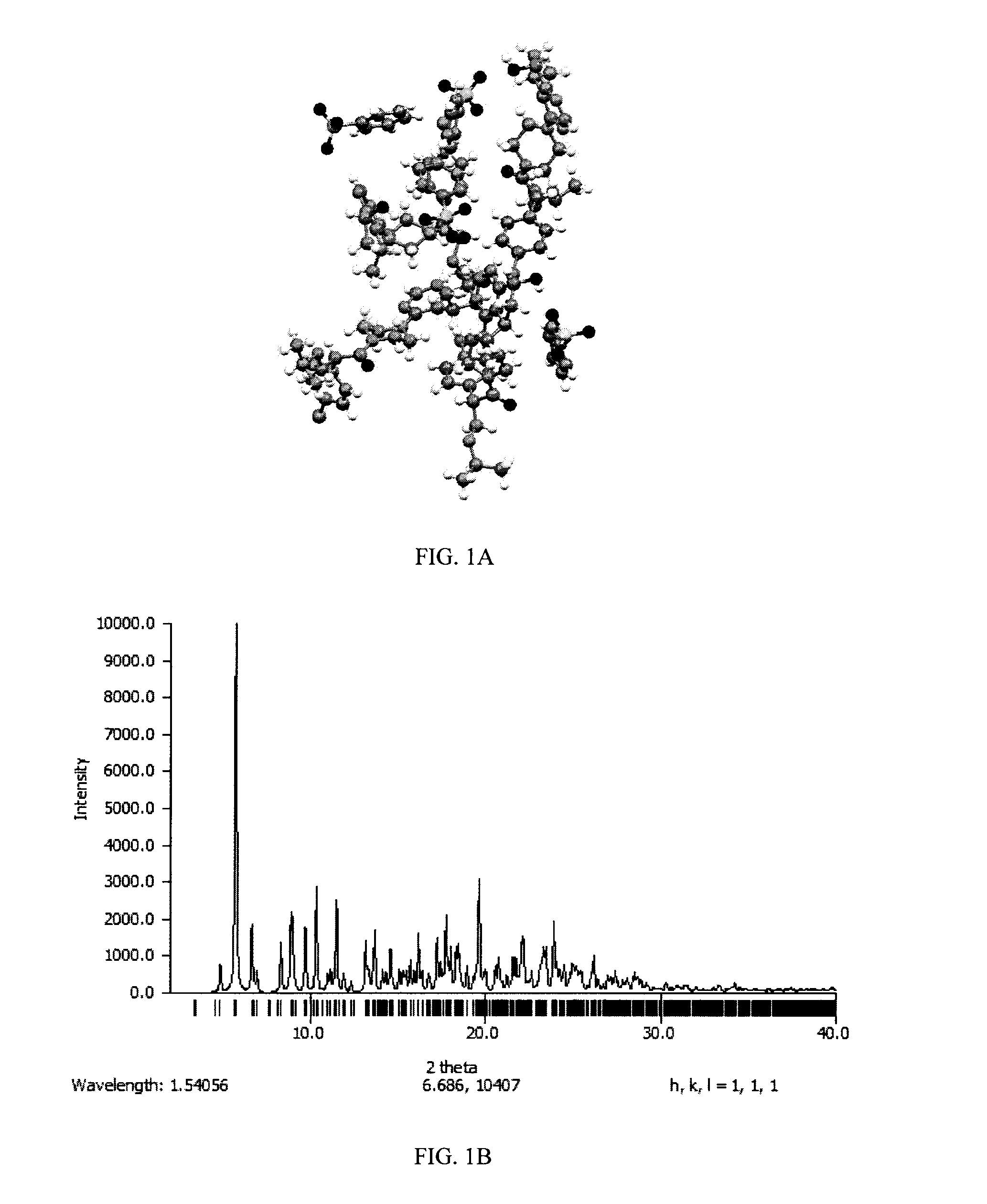Process of making hydroxylated cyclopentapyrimidine compounds and salts thereof
a technology of cyclopentapyrimidine and cyclopentapyrimidine, which is applied in the field of purification and making of hydroxylated cyclopentapyrimidine compounds, can solve the problems of difficult processing into drug forms
- Summary
- Abstract
- Description
- Claims
- Application Information
AI Technical Summary
Problems solved by technology
Method used
Image
Examples
example 1
[0080]
tert-butyl 4-((5R,7R)-7-hydroxy-5-methyl-6,7-dihydro-5H-cyclopenta[d]pyrimidin-4-yl)piperazine-1-carboxylate
[0081]A 3000 L glass-lined reactor was evacuated and filled with nitrogen to normal pressure 3 times. Water (660.0 kg) was added into the reactor while maintaining the temperature in the range of 20-30° C. The stirrer was started, followed by the addition of potassium dihydrogen phosphate (9.2 kg), dipotassium phosphate (23.7 kg) and glucose (78.5 kg). The mixture was stirred until solid dissolved completely. Then 30.1 kg of this buffer mixture was discharged into a 50 L drum for future use. To the reactor was added (R)-tert-butyl 4-(5-methyl-7-oxo-6,7-dihydro-5H-cyclopenta[d]pyrimidin-4-yl)piperazine-1-carboxylate (66.0 kg) and PEG400 (732.6 kg) and the mixture was heated to about 30-35° C. Maintaining the temperature at 30-35° C., a mixture of buffer solution (20.0 kg), KRED-101 (2.4 kg), GDH (3.4 kg) and NADP (2.2 kg) was added into the mixture. The mixture was then m...
example 2
[0084]
tert-butyl ((S)-2-(4-chlorophenyl)-3-(4-((5R,7R)-7-hydroxy-5-methyl-6,7-dihydro-5H-cyclopenta[d]pyrimidin-4-yl)piperazin-1-yl)-3-oxopropyl)(isopropyl)carbamate
[0085]To a three-neck 250 mL round bottom flask, equipped with a mechanical stirrer, a nitrogen inlet, and a thermocouple was charged tert-butyl 4-((5R,7R)-7-hydroxy-5-methyl-6,7-dihydro-5H-cyclopenta[d]pyrimidin-4-yl)piperazine-1-carboxylate (9.8 g, 29.3 mmol), 2-propanol (41.6 mL) and 2.75 M HCl in 2-propanol (32 mL, 88 mmol). The mixture was heated to 55-65° C. until reaction completion. Distilled 2-propanol (−13%) to remove excess HCl. The reaction mixture was cooled to 5° C. and added 4-methylmorpholine (21 mL, 191 mmol) at a rate maintaining the temperature below 25° C. The mixture was stirred at room temperature for 30 min. (S)-3-((tert-butoxycarbonyl)(isopropyl)amino)-2-(4-chlorophenyl)propanoic acid (10.5 g, 30.8 mmol) and 2-propanol (24.5 mL) were added and the reaction mixture was cooled 0-5° C. Additional 2-p...
example 3
[0086]
(S)-2-(4-chlorophenyl)-1-(4-((5R,7R)-7-hydroxy-5-methyl-6,7-dihydro-5H-cyclopenta[d]pyrimidin-4-yl)piperazin-1-yl)-3-(isopropylamino)propan-1-one monohydrochloride
[0087]To a 500 mL reactor was added tert-butyl ((S)-2-(4-chlorophenyl)-3-(4-((5R,7R)-7-hydroxy-5-methyl-6,7-dihydro-5H-cyclopenta[d]pyrimidin-4-yl)piperazin-1-yl)-3-oxopropyl)(isopropyl)carbamate (49 g) and 2-propanol (196 mL) and the reactor was heated to 50° C. A solution of HCl in 2-propanol (3M, 90 mL) was added to maintain the temperature from 50-70° C. The solution was maintained at 60° C. for 19 hours and the mixture was cooled to 0-5° C. Amberlyst® A-21 resin (60.5 g) was washed with water (50 mL) and purged with N2 for 5 min to remove excess water. The resin was then washed with 2-propanol (50 mL) and purged with N2 for 5 min to remove excess 2-propanol. The reaction mixture was re-circulated through the packed resin bed for at least 2 hours until pH 3.55-7.0 was reached. The resin bed was purged with N2 for...
PUM
| Property | Measurement | Unit |
|---|---|---|
| temperature | aaaaa | aaaaa |
| temperature | aaaaa | aaaaa |
| time | aaaaa | aaaaa |
Abstract
Description
Claims
Application Information
 Login to View More
Login to View More - R&D
- Intellectual Property
- Life Sciences
- Materials
- Tech Scout
- Unparalleled Data Quality
- Higher Quality Content
- 60% Fewer Hallucinations
Browse by: Latest US Patents, China's latest patents, Technical Efficacy Thesaurus, Application Domain, Technology Topic, Popular Technical Reports.
© 2025 PatSnap. All rights reserved.Legal|Privacy policy|Modern Slavery Act Transparency Statement|Sitemap|About US| Contact US: help@patsnap.com



